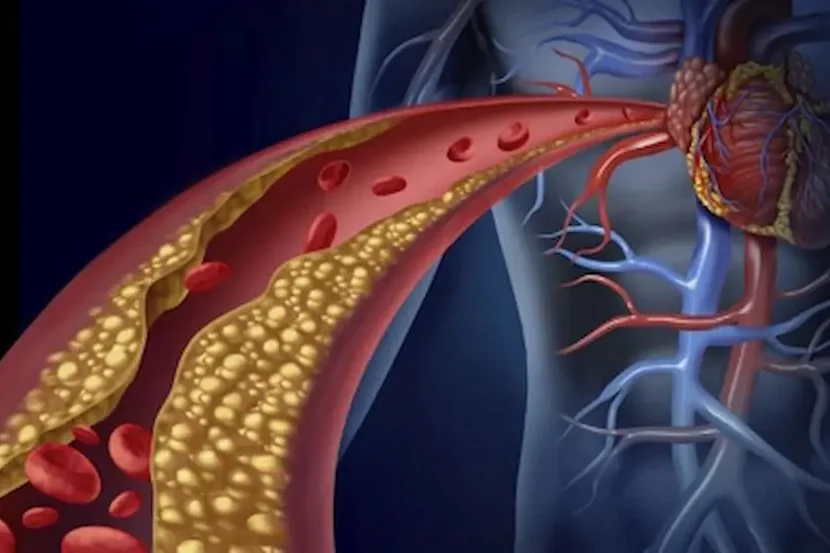Hyperlipidemia is a condition in which there is a high concentration of lipids in the blood, such as cholesterol and triglycerides. Hyperlipidemia is a risk factor for the development of cardiovascular and metabolic complications. The reasons why normal levels of concentrations may be affected vary and one of them is diet. To manage hyperlipidemia, a healthy diet rich in fruits, vegetables, whole grains, good sources of protein and omega-3 fatty acids is recommended. Exercise, weight management and avoiding smoking are also important. In some cases, medication or supplementation may be needed to manage hyperlipidemia.
Below, we present the behavioural changes (diet and exercise) that can change the lipid profile. At the end of the article there are tables explaining in more detail which foods are associated with an increase or decrease.
To lower cholesterol and “bad” cholesterol (LDL):
- Avoiding trans fats
- Reducing saturated fat intake
- Increase fibre intake
- Use of functional foods enriched with phytosterols/phytostanols
- Reduction of body weight
- Reduce cholesterol intake
- Increase physical activity
To reduce triglycerides:
- Reduction of body weight
- Reduction of alcohol consumption
- Increase in physical activity
- Reducing carbohydrate intake (mainly sugar)
- Replace foods rich in saturated fat with poly- or mono-unsaturated fatty acids
To increase “good” cholesterol (HDL):
- Avoiding trans fats
- Increasing physical activity
- Reducing body weight
- Reducing carbohydrate intake (mainly sugar) and replacing it with unsaturated fat
- Moderate alcohol consumption
- Stop smoking
What foods are fats found in?
| Fat | Food |
| Trans | Partially hydrogenated soybean oil, microwave pop corn, Packaged sweets (ice cream, biscuits, doughnuts, croissants, cereal bars and cakes), animal butter, fried (and deep-fried), crust foods, crisps, pizza |
| Saturated | Butter, red meat and its by-products, fried foods, fatty meats and poultry with visible fats, fatty sauces full of fatty dairy products |
| Single – insatiable | Olive oil, rapeseed oil, soft margarine, avocado, dark chocolate |
| Multi – insatiable | omega-3: Fish (sardines, salmon, mackerel, mackerel, tuna, sea bream), nuts, soybeans, flaxseed, margarines, vegetable drinks omega-6: Seed oils, margarines, vegetable drinks |
As far as cooking is concerned, light roasting, boiling and steaming should be preferred, while light frying and vigorous baking should be moderately preferred as cooking processes. Regular frying should be avoided and should be preferred very occasionally.
Επιλογές τροφίμων από όλες της ομάδες
| Prefer | Moderate use | Occasionally in limited quantities |
| Cereals | Whole grain (brown) | Refined bread, rice, and pasta,
biscuits, cornflakes |
| Vegetables | Raw and cooked vegetables | Potatoes |
| Legumes | Lentils, beans, split peas, peas, chickpeas,
soy | |
| Fruits | Fresh or frozen fruits | Dried fruits, jelly, jam,
canned fruits, sorbet, fruit juice |
| Sweets & Sweeteners | Non-caloric sweeteners | Sucrose, honey, chocolate, sweets/candies |
| Meat and Fish | Lean and fatty fish, poultry without skin | Lean cuts of beef, lamb, pork, and
veal, seafood, shellfish |
| Dairy Products
and Eggs | Skimmed milk and yogurt | Low-fat milk, low-fat cheese, and
other dairy products, eggs |
| Dressings-Sauces | Vinegar, mustard, fat-free sauces | Non-tropical vegetable oils,
soft margarines, mayonnaise, ketchup |
| Nuts/Seeds | Unsalted | Coconut |
| Cooking Methods | Grilling, boiling, steaming | Quick sautéing |
It is important to discuss with your doctor or dietician for further assessment and management plan if you suspect you are at risk of hyperlipidemia.
Learn more about hyperlipidemia here.

